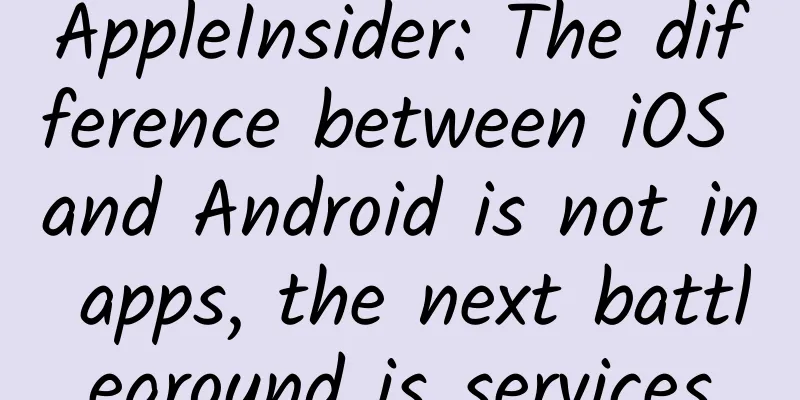Can you eat fruit if you have high blood sugar? Here’s how to choose the right fruit and avoid pitfalls!

|
As people's living standards improve, diabetes has become one of the three major chronic disease killers in my country. Relevant data show that in 2021, the number of diabetes patients in China is 141 million. As the number of diabetes patients increases, rumors about diabetes diet are also "blooming everywhere". Today we will compare the statement that "diabetics cannot eat fruit". Glycemic index GI , glycemic load GL Before analyzing whether diabetic patients can eat fruit, let's first understand the two indicators of food glycemic index GI and food glycemic load GL. Food glycemic index (GI), referred to as glycemic index, is an indicator that reflects the degree to which food causes blood sugar to rise in the human body. It is the response of the body's blood sugar production after eating. GI = area under the blood sugar curve of a certain food 2 hours after eating/area under the blood sugar curve of equivalent glucose content 2 hours after eating × 100%. We usually set the glycemic index of glucose to 100, GI greater than 70 is high GI food, 5570 is medium GI food, and less than 55 is low GI food. However, it is worth noting that if the carbohydrate content of a high GI food is small, although it is converted into blood sugar quickly, it does not have a significant impact on the overall blood sugar level. The glycemic load GL is used to evaluate the degree of impact of a certain food intake on human blood sugar. GL = weight of carbohydrates in the food × GI value of the food/100. Generally speaking, GL greater than 20 is a high GL food, GL between 10-20 is a medium GL food, and GL less than 10 is a low GL food. When we judge the impact of a food on postprandial blood sugar, we must consider both the glycemic index GI and the glycemic load GL. Effects of Fruit on Blood Sugar Fruits are not only sweet and delicious, but also can reduce the risk of high blood pressure and stroke if eaten regularly. However, since fruits are generally sweet, most diabetics are afraid to eat them and are basically isolated from them. In fact, people with diabetes can eat fruits, and eating fruits does not hinder the control of blood sugar after meals. In fact, the GI values of many fruits are not high and are considered low GI foods. For example, the GI value of kiwi fruit is 52, strawberry is 40, apple is 36, peach is 28, grapefruit is 25, plum is 24, and cherry is 22. Even those fruits that people think are very sweet actually have a lower GI value than rice (83) and steamed bread (88). For example, the GI values of grapes, bananas and mangoes are 43, 52 and 55 respectively, and watermelon has the highest GI value of 72. Therefore, for diabetics, fruits are actually more worth eating than refined staple foods such as steamed bread, rice, bread, and noodles. How to choose fruit for diabetics We know that the effect of a food on blood sugar is related to glycemic load (GL) in addition to GI value. That is, if the GI value of two foods is the same, then if you eat the same weight of the two foods, the food with high carbohydrate (sugar) content is more likely to raise blood sugar. Of course, the same is true for eating fruits. The sugar content of the fruits we often eat is as follows: fruits with a sugar content of 4% to 7% include watermelon, strawberry, honeydew melon, etc.; fruits with a sugar content of 8% to 10% include pears, lemons, cherries, cantaloupes, grapes, peaches, pineapples, etc.; fruits with a sugar content of 9% to 13% include apples, apricots, figs, oranges, grapefruits, lychees, etc.; fruits with a sugar content of more than 14% include persimmons, longans, bananas, bayberries, pomegranates, etc. Therefore, fruits with low GI values and low sugar content are the least burdensome for diabetic patients to eat. In addition, even for the same kind of fruit, the GI value is not exactly the same. For example, the GI value of a crisp apple and a soft apple, a hard peach and a soft peach, a fruit that needs to be chewed carefully before swallowing must have a lower GI value than a fruit that is juicy when you bite it. Because it takes patience to chew, it means that the sugar is confined in the plant cells and will not be released quickly. It is recommended that diabetic patients pay attention to the following 4 points when eating fruit: 1. Limit the total amount, try to control it to about 200 grams a day; 2. Eat small amounts and multiple times. You can eat some fruit between meals in the morning and afternoon. This can prevent a rapid rise in blood sugar at that time and prevent hypoglycemia before the next meal. 3. Try to choose fruits with low sugar content. If the GI value is high, such as watermelon, be sure to control the total amount; 4. Give priority to fruits that need to be chewed, such as crisp apples, slightly hard peaches, etc. |
<<: Pulmonary rehabilitation and self-management: Master your breathing
Recommend
Morning jogging vs night jogging, which is healthier? The answer is unexpected
Running is a globally popular sport, popular for ...
Delayed menstruation, leucorrhea, transparent and stringy
Girls will be more anxious because of delayed men...
How to turn black labia majora into red
Many people actually care very much about the col...
What are the side effects of anti-aging foundation?
Everyone wants to have very good skin. To achieve...
Is it easy for girls to get pregnant if they have cold uterus?
Many girls usually don’t pay much attention to th...
Does drinking Chinese medicine during ovulation have any effect?
There is generally no problem taking Chinese medi...
Black bleeding after taking birth control pills for a week
Emergency contraception mainly refers to the use ...
Will I bleed two days before the abortion?
Before undergoing medical abortion, women must fu...
How to judge whether the self-heating hot pot is cooked? How to stop heating the self-heating hot pot
Have you ever tried the self-heating hot pot that...
What are the benefits of eating an apple every day for pregnant women?
Fruit can provide our body with a large amount of...
Can't move your wrist and it hurts? If you have these symptoms, be careful!
The three major sufferings of contemporary people...
Hip joint care "instructions"
Author: Li Tao, deputy chief physician, Nanfang H...
Can acupuncture treat amenorrhea?
Menstruation is a normal physiological behavior o...
How to get pregnant with an anteverted uterus?
Speaking of the uterus, everyone knows that it is...
How to relieve pain around nipple
The health of breast nipples is of great concern ...









